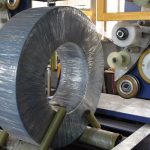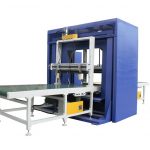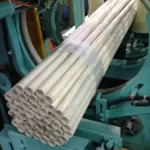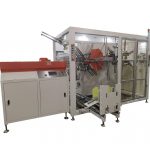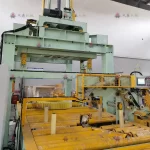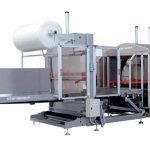How Automatic-Horizontal-Stretch-Wrappers for Piles of Plates Reduce Operational Costs
In the competitive world of manufacturing and logistics, finding ways to reduce operational costs is crucial for maintaining profitability. One innovative solution is the use of automated automatic-horizontal-stretch-wrappers for piles of plates. These machines revolutionize packaging processes, providing significant cost savings and efficiency improvements. Let’s dive into how these machines work and the benefits they bring.
Understanding Automated Stretch Wrappers
An automated horizontal stretch wrapper is a machine designed to wrap products or materials, such as stacks of plates, with stretch film. This process secures the load for transport and storage, protecting it from damage and contamination. The automation aspect means minimal human intervention is needed, allowing for consistent and efficient packaging.
Enhanced Efficiency and Productivity
One of the primary advantages of automated stretch wrappers is the enhanced efficiency they bring to the packaging process. By reducing the need for manual labor, these machines can wrap products much faster than traditional methods. This speed increases throughput, allowing businesses to handle larger volumes with ease.
Reduction in Labor Costs
Labor costs are a significant part of operational expenses. By automating the wrapping process, companies can reduce the number of employees needed on the packaging line. This not only saves on wages but also decreases costs related to training, benefits, and potential overtime.
Consistency and Load Stability
Manual wrapping often results in inconsistent tension, leading to unstable loads. Automated stretch wrappers ensure consistent application of stretch film, providing uniform tension and stability. This consistency reduces the risk of damage during transport, minimizing costs related to product loss and returns.
Material Savings
Automated stretch wrappers are designed to optimize the use of stretch film, ensuring that the exact amount needed is used every time. This precision leads to material savings as there is less waste and overuse. Over time, these savings can significantly impact the bottom line.
Improved Workplace Safety
Safety is paramount in any operation. By reducing the need for manual wrapping, automated systems reduce the risk of workplace injuries. Employees are less exposed to repetitive strain injuries and potential accidents, which can lead to lower insurance premiums and fewer compensation claims.
Flexibility and Customization
These machines offer a high degree of flexibility, allowing businesses to tailor the wrapping process to specific product needs. Whether dealing with different sizes or weights, automated stretch wrappers can be adjusted quickly, ensuring that all products are securely wrapped without extensive downtime for reconfiguration.
Energy Efficiency
Modern automated stretch wrappers are designed with energy efficiency in mind. They consume less power than manual methods or older machines, contributing to lower utility bills. Energy-efficient technology also aligns with sustainability goals, enhancing a company’s reputation.
Fast Return on Investment (ROI)
While the initial investment in automated stretch wrapping technology can be substantial, the return on investment (ROI) is often rapid. By cutting labor, material, and energy costs, these machines can quickly pay for themselves, often within a few years.
Integration with Existing Systems
Automation technology is continually advancing, and modern stretch wrappers can seamlessly integrate with existing production lines. This integration means businesses can upgrade their systems without significant disruption, ensuring a smooth transition and immediate benefits.
Case Studies: Real-World Impact
Numerous companies have successfully implemented automated stretch wrapping solutions, reporting significant cost reductions and efficiency gains. These case studies illustrate the practical benefits and demonstrate how such technology can transform operations.
Conclusion
In conclusion, investing in automated automatic-horizontal-stretch-wrappers for piles of plates is a strategic move for businesses aiming to reduce operational costs. By enhancing efficiency, minimizing waste, and improving safety, these machines offer a comprehensive solution that boosts profitability. As technology continues to evolve, embracing automation is not just about cutting costs—it’s about positioning your business for future success.


